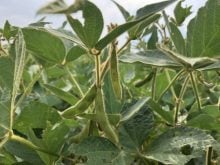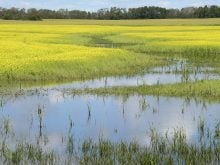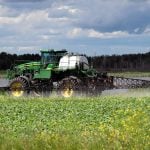CGC says initiatives planned under the strategy will allow it to respond to new trends and challenges facing the industry
The Canadian Grain Commission has adopted what it calls a new science strategy.
“The strategy lays out a vision for the future of science and research at the Canadian Grain Commission and positions us to respond to the latest trends and developments in the grain sector,” the CGC said in a recent news release.
“The science strategy… affirms our commitment to science as the foundation of Canada’s grain quality assurance system and will ensure that this system meets the current and future needs of the grain sector.”
Read Also

Fall rye hits record high in Manitoba
Winter cereals 2025: More Manitoba fields grew fall rye in 2025 than ever before, but winter wheat slipped and, while spring stand survival was good, drought took its toll
The strategy identifies five so-called drivers that are expected to influence the direction of grain quality science in the future:
- New global trends and emerging market demands.
- Advances in technology.
- Evolving end uses for Canadian crops.
- Concerns related to climate change and extreme weather.
- Emerging issues related to food safety and nutrition.
Proposed initiatives include improvements to export cargo monitoring programs at Canadian ports, an expansion of the commission’s popular Harvest Sample Program, the evaluation of new technologies that can ensure the quality and safety of Canadian grain, and new methods to assess grain quality and end-use functionality.
Other proposed measures include developing best management practices for grain sampling and analysis, investigating the impact that new agronomic practices could have on grain quality, facilitating better collaboration between the CGC and partners in government and industry, and assessing the commission’s infrastructure, equipment and technology needs, particularly as they relate to the CGC’s Grain Research Laboratory.
The strategy was based on consultations in early 2022 with producer and industry organizations, end users of Canadian grain, academics and provincial and federal government departments.
“The strategy is based on what we heard during the engagement, but it’s also based on our own current activity,” said Esther Salvano, director general of the Grain Research Lab in Winnipeg.
“We identified emerging industry needs regarding grain quality and grain safety.”
The strategy does not contain detail on how the commission intends to finance the new initiatives or how much implementation of the science strategy will cost.
However, in a support document distributed to the media, the CGC indicated that respondents in the early 2022 consultation process noted that “a stable funding model, independent of grain inspection and weighing revenue, is necessary to conduct long-term research that is relevant to producers and the grain value chain.”
Several respondents also raised concerns over the need to renew and expand the grain commission’s laboratory spaces and equipment.
Some stakeholders emphasized the need for obtaining new facilities and equipment to ensure the Grain Research Laboratory can meet future research needs.
In addition to the need for more space, respondents identified a need to modernize and upgrade technologies so the lab can quickly respond to changing technological advancements.
In a March 16 interview with The Western Producer, Salvano said the CGC has planning documents in place to facilitate expansion of the commission’s science facilities.
The commission also has an investment plan that would accommodate expansion of the GRL’s current footprint, she said.
However, capital expenditures required to implement the science strategy have not been completed. Nor have detailed timelines been established for implementation of the strategy.
“We have started out preliminary discussions so we’re looking at the list of priorities — what can be achievable quickly — and we’re also looking at what kinds of investments (will be required).”
Implementation of the strategy and its priorities will be reviewed annually, she added.
“We are giving ourselves that flexibility.”
From producers and grain industry stakeholders, the strategy, once implemented, is expected to support market access by more rapidly and more accurately assessing potential trade irritants such as genetically modified organisms in Canadian grain cargoes, mycotoxins such as deoxynivalenol, allergens and allowable pesticide residue levels.
“Our science strategy will guide our planning decisions and future investments. It ensures that we will continue to be the pre-eminent scientific research centre for studying, monitoring, and testing Canadian grain,” said Salvano.
To view the strategy, visit www.grainscanada.gc.ca/en/grain-research/grl/science-strategy/.
















